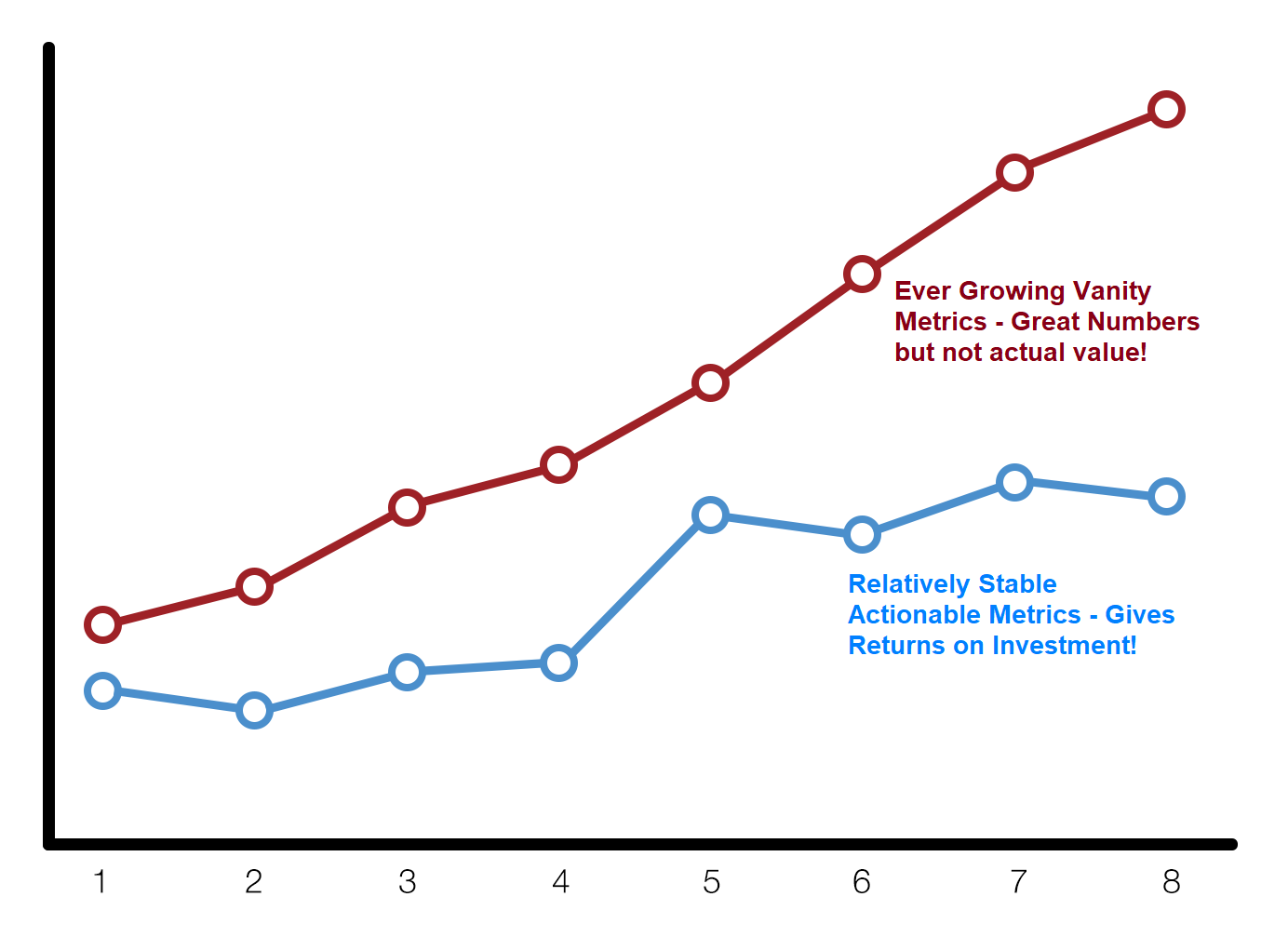VANITY METRICS: Definition and Identification
 Vritika Naik
Vritika Naik
Sama is the head chef at the restaurant that he owns. He believes that his dishes have an incomparable flavour. So he cooks dishes without tasting them or demanding feedback. He has absolutely no idea whether his food is liked by people or not. Every day he gets into the kitchen, checks the orders and serves whatever is asked for. He gets new customers on regular basis and thus does not care about whether the hotel is prospering or not. Eventually, the number of customers reduce and one fine day Sama is forced to shut down your restaurant. Sama investigates the reason behind the decrease in customers and then stumbles upon the feedback book. Over three-fourth of the customers complained about the amount of salt and spice in their food. More than half of them were dissatisfied with the quantity served. Sama now regrets not checking the feedbacks in time.
Don't be Sama when it comes to your product!
There may have been a moment when you worked on a problem with the expectation that it would be successful. Intuitions, guesses, and assumptions will only get you so far before you need to pave the path with proper analysis and strategies. If you want to stay ahead of the curve, outperform the competition, and most importantly, generate value for your future and present consumers, you must establish and measure the proper metrics for your organisation.
Metrics are measurable data points that a company tracks and analyses to determine the performance of its product. Stakeholders, marketers, and the product management team utilise metrics to spot problems, define objectives, and make educated choices. A metric is only helpful if it provides insights. Metrics are intended to assist you in understanding the popularity of specific features in your products, user engagement, consumer contentment or discontent, and the reasons behind it.
One of the gravest mistakes product managers do is that they overestimate the utility of certain KPIs. Although statistics and graphs might appear appealing and be a sign of your knowledge, don't make the mistake of believing that all numbers will benefit you. Vanity metrics are measures that seem nice on paper and appear to be useful, but in reality, are not. These indicators are thrilling to refer to if you want to appear to be progressing, but they are frequently ineffective and unrelated to anything you can control or repeat in a meaningful way.
So how do we know whether a metric is vanity or not? Typically, this is based on your business goals.
Vanity metrics include total social media impressions, page views, marketing expenditure, total website traffic, the number of messages exchanged on your messaging app, and so on. These metrics have no value for your organisation and may be extremely hazardous since they mislead teams to think they are achieving results even when they do not give any meaningful information about the growth or present condition of your firm.

There is nothing intrinsically wrong with taking pride in the numbers or with considering how your company or department appears. However, flashy figures presented as proof of massive growth only make for somewhat intriguing headlines and press releases—they rarely have a home within a firm or project.
A vanity measure provides an exaggerated picture of a company's development or potential. When developing metrics, it is critical to answering the following three questions:
- Does this accurately reflect the product?
- Can the results be replicated?
- Does this metric assist me in making sound decisions?
Here are some red flags that help you know that you're monitoring a vanity metric:
- It is devoid of any sort of insight.
- Measuring it is excessively simple.
- It is frequently deceptive and does nothing to assist you in enhancing your product or business.
Some common examples of vanity metrics are raw pageviews, running total of customers, running totals of purchases or downloads, social media followers, the number of new users gained per day, registered users and downloads.

Vanity metrics are sometimes contrasted with actionable metrics, which are metrics that assist you in making decisions and helping your organization achieve its goals or thrive. A vanity measure is shallow and poorly understood, and it frequently leads to a team resting on its laurels rather than delving into the data for insights on how to enhance the product. Of course, this sort of measurement can entice businesses. On the other hand, an actionable metric is a well-defined measurement that provides significant insights into company goals. This information enables teams to make educated decisions regarding the path of a product or business.
In contrast to the vanity metrics which we learnt about before, some examples of metrics that could give us significant insights into the product success are: Bounce rate, Time on the page, Sessions, Unique users, Pages per Session, Pages per user per month, Organic branded search lift, Spend per order, active subscriptions, renewal rate, etc.
Understand your company or product's goals and then focus on metrics that really matter. It is this fact that will help you drive your product towards success.
Subscribe to my newsletter
Read articles from Vritika Naik directly inside your inbox. Subscribe to the newsletter, and don't miss out.
Written by
